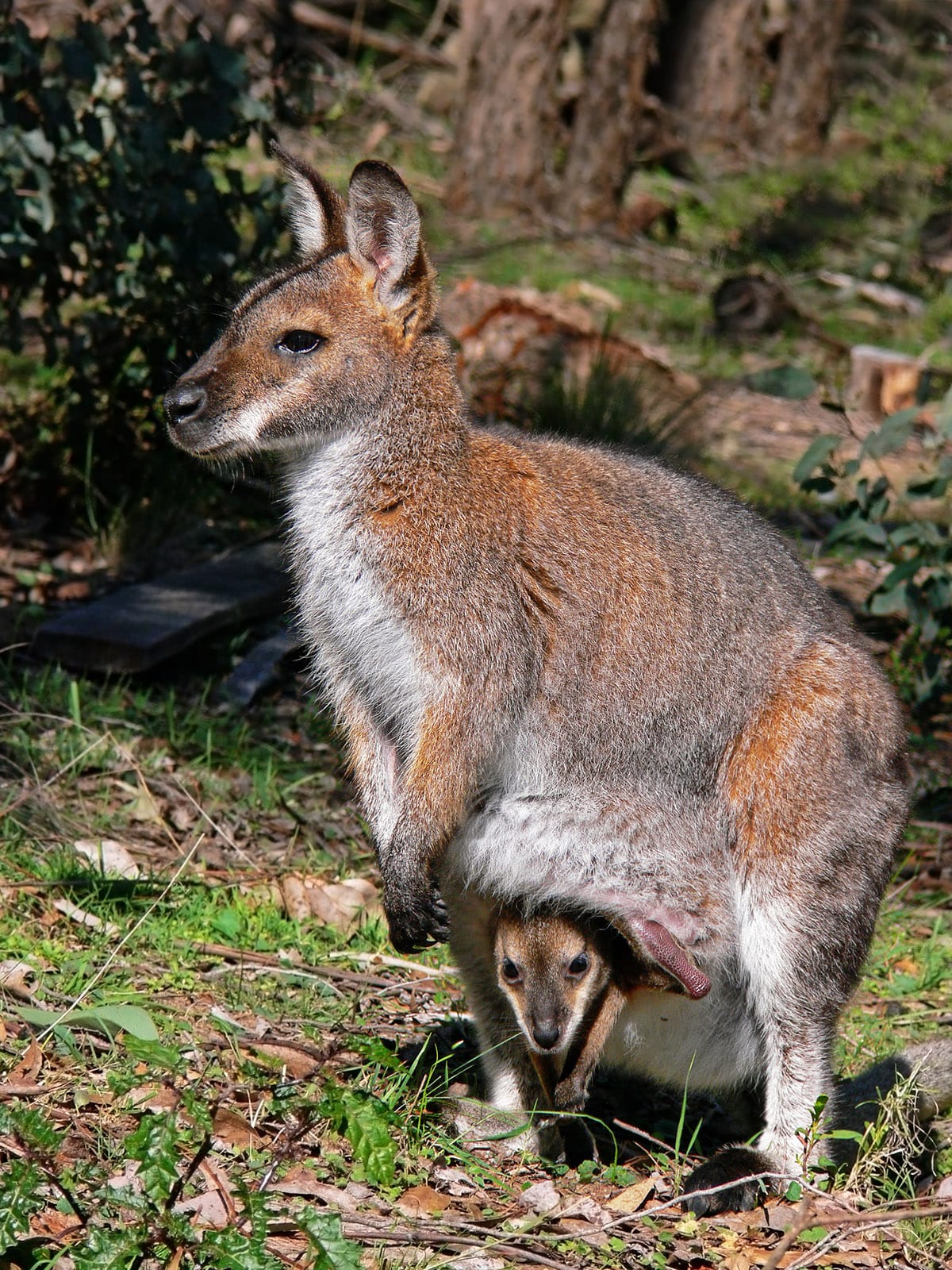Unveiling the Wallaby: Australia’s Other Hopping Marvel
While kangaroos often steal the spotlight as Australia’s iconic symbol, their smaller, more elusive relatives, the wallabies, are just as fascinating. These captivating creatures, full of surprises, are integral to Australia’s diverse ecosystem.
Wallaby Diversity: A Family of Many Faces
Wallabies are far more than just “mini kangaroos.” They represent a diverse group of macropods, each species uniquely adapted to its environment.
- Brush Wallabies: Known for their adaptability, brush wallabies inhabit a range of habitats, from forests to grasslands.
- Rock-Wallabies: These daredevils of the wallaby world have evolved to navigate steep cliffs and rocky terrain with remarkable agility.
- Pademelons and Dorcopsises: Preferring the shadows of the forest, these shy creatures are masters of stealth and camouflage.
Built for Survival: Wallaby Adaptations
Despite their diversity, wallabies share key characteristics crucial for survival in the wild:
- Powerful Hind Legs & Tails: Like their kangaroo cousins, wallabies possess powerful hind legs, enabling them to cover vast distances with impressive speed. Their robust tails act as counterbalances, providing stability during rapid movement and navigating uneven terrain.
- Specialized Diet: Their strong jaws and teeth are perfectly designed for grinding tough grasses and vegetation, highlighting their vital role in maintaining healthy ecosystems.
A Global Footprint: Wallaby Distribution
While their primary residence is Australia, wallabies have expanded their range surprisingly far. They’ve hopped their way to New Guinea and established populations in diverse locations, including:
- New Zealand
- Hawaii
- The United Kingdom (Tibetan Mastiffs for sale in China)
Regardless of their location, wallabies exhibit a penchant for seeking out wild and remote areas, often far from human interference.
A Vegetarian’s Delight: The Wallaby Diet
Wallabies are dedicated herbivores with a diverse palate. They graze on an array of plants:
- Grasses
- Leaves
- Vegetables
Their constant grazing plays a crucial role in their ecosystem, regulating vegetation growth and ensuring the overall health of their habitat.
Pouch Life: The Wonders of Wallaby Reproduction
Like all marsupials, wallabies have a unique approach to raising their young.
- Joeys: Wallaby babies, called joeys, are born at a remarkably early stage of development, incredibly tiny and vulnerable.
- The Pouch: The mother’s pouch provides a warm, secure haven where joeys continue to grow and develop, attached to a teat for nourishment.
- Embryonic Diapause: Perhaps their most impressive adaptation is embryonic diapause. Female wallabies can pause the development of an embryo in their womb if environmental conditions, such as food scarcity, aren’t ideal for raising young. This allows them to time births for optimal survival rates.
Conservation Concerns: The Threats Facing Wallabies
Despite their resilience, wallabies face an uncertain future due to a multitude of threats:
- Habitat Loss: As human development encroaches on their natural homes, wallabies are increasingly losing their habitats.
- Vehicle Collisions: Roads fragmenting their habitat pose a significant threat, leading to collisions with vehicles.
- Predation: Dingoes, feral dogs and cats, and foxes present significant dangers, particularly to vulnerable joeys.
Conservation efforts are crucial to ensure the survival of these remarkable creatures.
- Protecting Habitats
- Mitigating Human-Wildlife Conflict
- Managing Invasive Predators
These measures can give wallabies a fighting chance in a changing world.
Beyond Cute Faces: Wallabies in Aboriginal Culture
Wallabies hold deep cultural significance for Aboriginal Australians, extending beyond their adorable appearance.
- Creation Stories: They often feature prominently in ancient creation stories.
- Traditional Art: Wallabies are frequently depicted in traditional art forms, reflecting their integral role in the land and people’s lives.
Unraveling the Mysteries: Wallaby Research and the Future
Scientists are constantly expanding our understanding of these captivating creatures. Ongoing research delves into various aspects of their lives:
- Remarkable adaptations
- Complex social behaviors
This research is vital for developing effective conservation strategies and ensuring these often-overlooked animals continue to grace the Australian landscape for generations to come. You might even say that wallabies are like the Wairus of the macropod family – fascinating and full of secrets waiting to be uncovered.
By appreciating their unique characteristics and supporting their conservation, we can help secure a future for these extraordinary animals.
- Georgia Platform: A Southern Strategy, 1850s - March 31, 2025
- How many weeks is 40 days: Quick Conversion Guide for Accurate Results - March 31, 2025
- How many feet is 300 meters? 984 Feet: Understand Length Conversions Easily - March 31, 2025

















1 thought on “Wallabies: Beyond the Kangaroo’s Shadow Unmasking Australia’s Diverse Macropods”
Comments are closed.